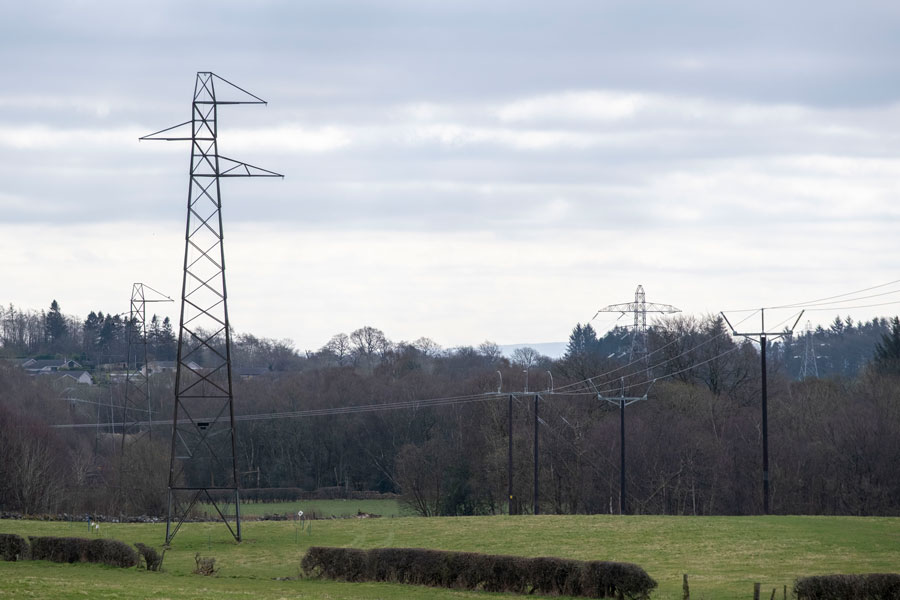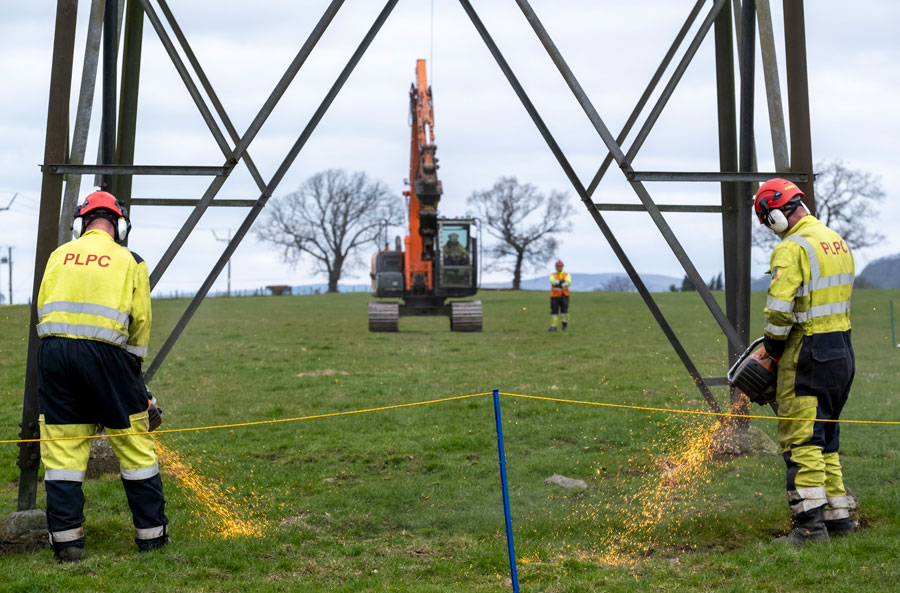Scotland is saying so long to its oldest transmission line as SP Energy Networks brings down 62 electricity towers that have served the community for almost 100 years.

Known as the ‘G-Route’, the electricity transmission line was built in 1929 to connect three coal-fired power stations in Renfrewshire; Dellingburn, Yoker and Braehead.
The line was constructed following the 1926 Electricity Act, which kicked off the connection of over 120 coal-fired power stations around the country using overhead transmission lines.
In 1920 only around 6% of British households - around 500,000 homes - had access to electricity. The Act aimed to standardise all the equipment, from steel to nuts to conductors, used to transport energy across the country as well as making electricity accessible to more homes than ever before.
Initially built to provide power for heavy industries and the shipyards, almost a century later and the routes’ customers were quite different, serving 70,000 homes and businesses in Devol Moor and Bishopton, including the Queen Elizabeth University Hospital and Braehead before the line was switched off at the end of last year.
Now, in place of the aging steel towers, this section of the network is served by 182 wooden poles, providing a more resilient and reliable service to its customers and enabling greater electrification of the region. Nicknamed ‘Trident’ due to their design, these wooden poles have been used in place of the steel towers due to the nature of the circuit needed to support the lines’ customers.

Richard Wylie, Lead Design Engineer at SP Energy Networks, said: “One hundred years ago, a group of ambitious engineers began work to connect up Britain’s electrical grid and bring electricity into homes and changing people’s lives forever.
“These transformative towers helped open up access to electricity to those who had never had it before – modernising and evolving the home to be able to adopt revolutionary appliances that are now a regular part of everyday life.
“A century on and we’re embarking on a multi-billion pound investment in our transmission network – the greatest rewiring of the network since it was built– to open up capacity on the grid to transport clean, homegrown electricity to power communities across Britain towards an all-electric future.”
Lines like the G-Route revolutionised life at the time, bringing in time-saving appliances like the electric iron, vacuum cleaners, ovens, fridges and washing machines into homes. This new, transformative investment in the electricity network is going to revolutionise lives once again by changing the home to all-electric, where households have heat pumps and electric vehicles all powered by green, renewable electricity.
SP Energy Networks has set out a £10.6bn plan to help rewire Britain and deliver the critical electricity infrastructure needed for decades to come. The investment will include 12 new major transmission substations, 450km of upgraded existing circuits, 87km of upgraded overhead lines and 35km of underground cables.